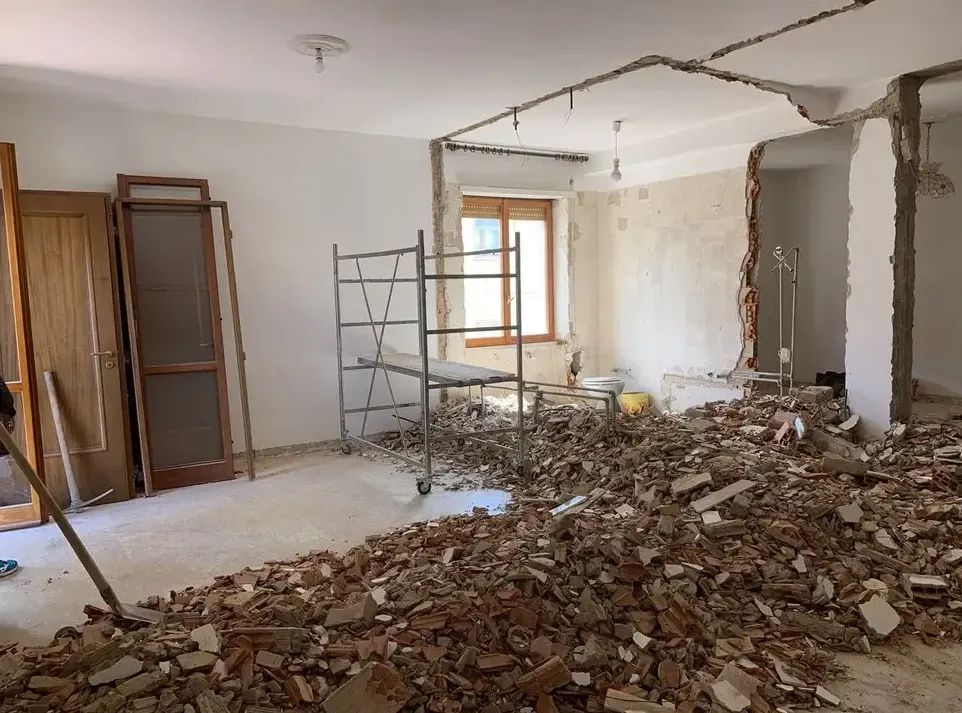"As-Is" vs. Renovated: A Guide to Buying and Valuing Properties with Existing Wear and Tear in India 2025

By
Shrusti Naik
Posted on August 7, 2025. 10 mins

"As-Is" vs. Renovated: A Guide to Buying and Valuing Properties with Existing Wear and Tear in India 2025
Introduction

Last month, a 1,400 sq ft resale flat in Vasant Kunj hit the market at ₹1.8 crore “as-is”. Two weeks later, an identical unit, freshly renovated, listed at ₹2 crore and sold within a week. The ₹20 lakh gap is the new Indian arithmetic of wear and tear. With 42 % of resale inventory now labelled “as-is”, buyers and sellers must learn to price, negotiate and finance existing defects rather than fear them.
1. Decoding the Two Price Tags – “As-Is” Versus “As-Repaired”
“As-is” is simply the property’s value today, peeling paint, ageing wiring and all. “As-repaired” imagines the same flat after strategic fixes. Maverick Appraisal Group shows the gap averages 10-20 % in Indian metros, translating to ₹15-30 lakh on a ₹1.5 crore asset . In Mumbai’s western suburbs, a 1995 building quoted ₹1.35 crore as-is; post-renovation quotes reached ₹1.58 crore, validating the spread. Also check out Fractional Ownership of Real Estate in India 2025
2. How Indian Appraisers Calculate the Gap
Valuers inspect the property, then prepare a hypothetical “as-repaired” estimate using comparable sales of refurbished flats within 500 metres. A 2024 Knight Frank note illustrates the process:
- Structural audit fee: ₹8,000-₹12,000
- Renovation cost estimate: ₹1,200-₹1,800 per sq.ft. for mid-range finishes
- Adjusted value: As-is price + renovation cost - buyer risk premium (usually 5 %)
This transparent worksheet is now mandatory for PSU bank loans on resale stock older than 15 years. Besides, you can check out our blog on home elevation designs.
3. Financing the Fix – Loans that Cover Both Purchase and Repairs
Traditional lenders shy away from heavy-renovation deals, but 2025 brings structured solutions:
- HDFC’s “Renovation Plus” bundles purchase and repair finance up to 90 % of the as-repaired value, disbursed in two tranches after stage-wise inspections.
- SBI’s Green Home Loan offers 0.25 % rate rebate if renovation includes LED lighting and low-flow taps, sweetening the EMI math.
Buyers must submit contractor quotations and post-renovation photos before the final disbursement. Check out our blog on hall wall colour combinations.
4. Buyer Tactics – When “As-Is” Makes More Sense
Renovation is not always profitable. Choose as-is when:
- You possess in-house design skills or contractor discounts, cutting renovation cost by 20–25 %.
- The building is due for redevelopment within five years, making cosmetic upgrades wasteful.
- You need to close quickly, as-is deals in Noida Extension close 10-15 days faster than renovated stock, critical for bridging-finance buyers. Also read The Unseen Influence of Local Infrastructure Projects on Property Values: A 2025 Indian Playbook
5. Seller Strategy – Pricing Wear Without Scaring Buyers
Sellers should commission a pre-listing inspection and publish the report. NoBroker’s 2025 pilot found transparent defect disclosure reduced negotiation rounds from four to two and preserved 3 % of the asking price. Offer repair credits instead of doing the work yourself, buyers prefer ₹5 lakh cash-back over a ₹6 lakh makeover they may not like. You might also like to checkout The Home Selling Checklist
Conclusion

An as-is property is neither a bargain nor a burden, it is a renovation spreadsheet waiting to be balanced. Price the gap, finance the fix, and let data, not décor, drive the decision. In 2025’s tight inventory market, the buyer who can read wear and tear like a balance sheet will always find value others overlook.
If you are looking for a house to call your home, Jugyah provides smart housing solutions with its intelligent technology to help you find your dream abode.
Frequently Asked Questions
Q1. How much discount should I expect on an as-is flat?
Expect 8–15 % below comparable renovated stock; heavy structural issues may push it to 20 %.
Q2. Can I include renovation cost in my home loan?
Yes, HDFC and SBI bundle renovation finance up to 90 % of as-repaired value with stage-wise disbursement.
Q3. Is a structural audit mandatory for older resale flats?
PSU banks now insist on a structural audit for flats older than 15 years—budget ₹10,000–₹15,000.
Q4. Do green renovations fetch higher prices?
IGBC-certified retrofits add ₹150–₹200 per sq ft premium, recovering cost within 3–4 years.
Q5. Should I renovate before selling or offer a credit?
Offer a repair credit—it shortens timeline and lets buyers tailor finishes to their taste.